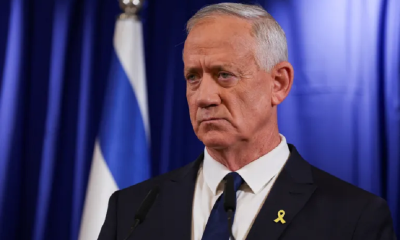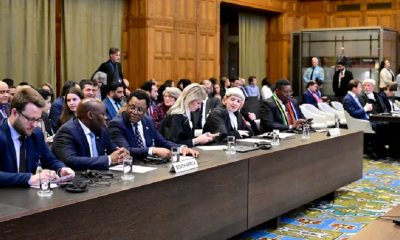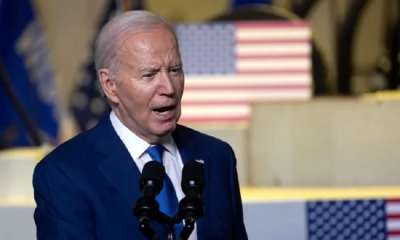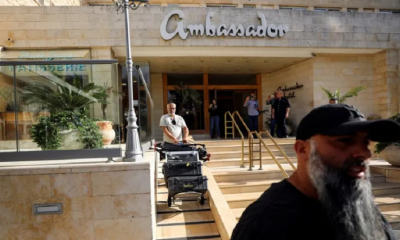Latest News
Israel’s new Gaza evacuation zones leave Palestinians few places to go
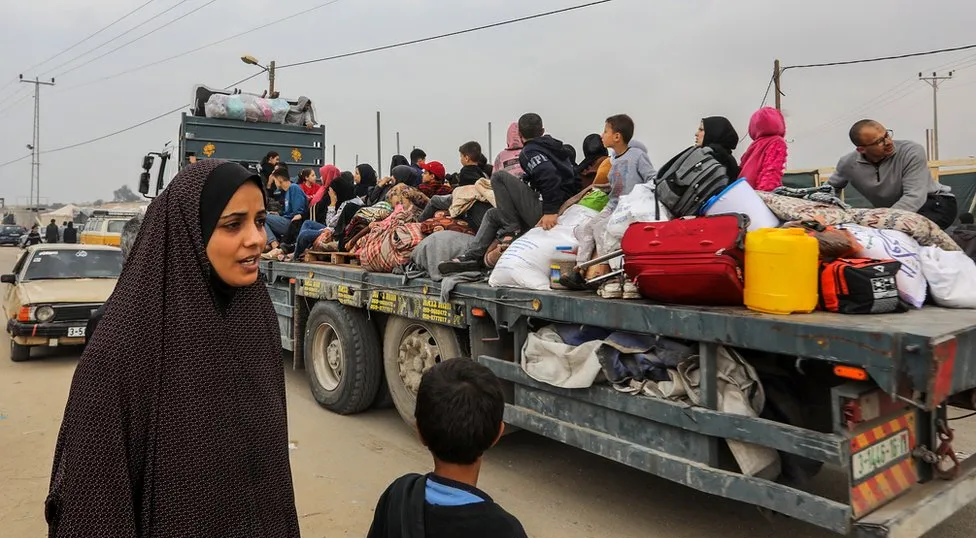
Aid agencies are warning that Palestinian civilians are running out of places to flee to, after the Israeli military first ordered tens of thousands to evacuate part of the main city in the south ahead of an assault by tanks and troops.
A map posted on social media on Monday told people in northern and central Khan Younis to leave immediately to “preserve your safety and security”. Arrows directed them to move to three already overcrowded areas to the south and west.
On Tuesday however, the Israeli military said its forces had already entered the city and it was now too dangerous to leave.
“Don’t get out. Going out is dangerous. You have been warned,” new leaflets said, warning people to stay inside designated shelters and hospitals.
The evacuation of specific areas marked on online maps is part of a new approach the military says it is taking to avoid civilian casualties in its eight-week war with Hamas, following heavy pressure from the United States.
But there is concern that the strategy is too complicated, too dependent on technology, and too likely to cause panic to be a workable solution.
BBC Gaza correspondent Rushdi Abu Alouf, who is currently in Istanbul, said he had spoken to relatives and other people in the affected areas who were not aware of the IDF’s map or could not see it because of patchy internet access and no regular supply of electricity.
“This is a joke, not a map, because we don’t know where to go,” a displaced person who was sheltering in Khan Younis told him. There is also no guarantee they will be safe from bombardment if they flee.
The main Palestinian telecommunications firm meanwhile said that all phone and internet services were cut once again.
Before a temporary truce collapsed last Friday, the Israeli ground operation was focused on the north of Gaza.
The Israel Defense Forces (IDF) issued a blanket order to all 1.1 million people living there to move south of the Wadi Gaza river for their own safety. Hundreds of thousands heeded the call as Israeli troops penetrated deep into Gaza City – with many of them eventually ending up in Khan Younis.
The IDF also repeatedly urged civilians across Gaza to move to al-Mawasi, a thin strip of territory along the Mediterranean coast which officials described as a “humanitarian zone”.
During a visit to Israel on Thursday while the fighting was paused, US Secretary of State Antony Blinken said he had told Israeli leaders that they had to “put in place humanitarian civilian protection plans that minimize further casualties of innocent Palestinians”. These included “clearly and precisely designating areas and places in southern and central Gaza where they can be safe and out of the line of fire”, he added.
The IDF’s response was to publish on its Arabic-language website on Friday an ‘Evacuation Zone Map’ that divided Gaza into more than 600 numbered blocks, ranging in size from about 0.03 to 25 sq km (0.001 to 9.6 sq miles).
Jets also dropped leaflets with QR codes, allowing people with a working smartphone and an internet connection to access the map – and also asking them to share their location.
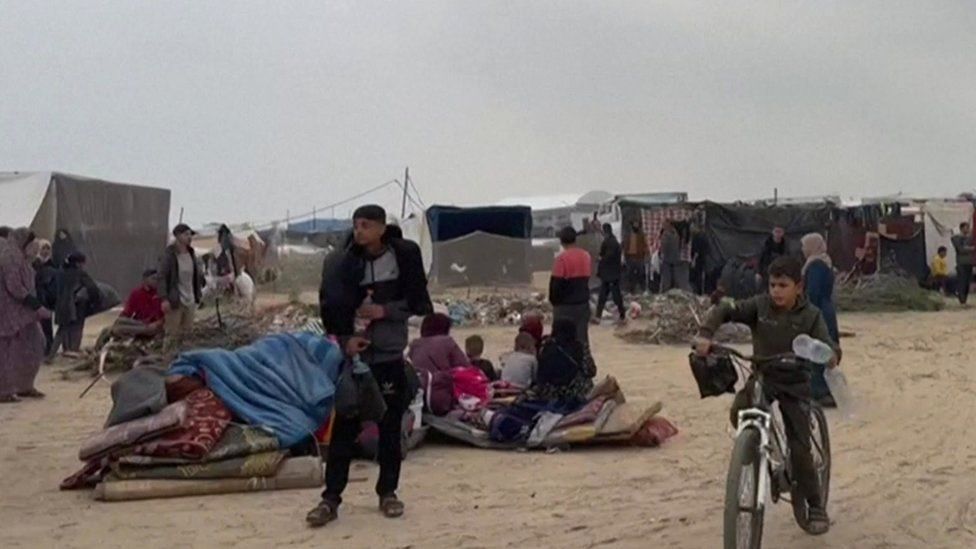
Asked about this approach on Monday, US state department spokesman Matthew Miller said it had “seen improvements”. “We have seen them evacuate specific neighbourhoods, rather than entire areas, so the number of displaced persons will hopefully be lower in southern Gaza than it was in the north,” he added.
However the IDF’s order for civilians to move from Khan Younis to Rafah was condemned by the head of the UN agency for Palestinian refugees, Unrwa, which runs the biggest humanitarian operation in Gaza and has 958,000 displaced people sheltering at 99 facilities in the south.
“The order created panic, fear and anxiety,” warned Philippe Lazzarini on Monday evening. “At least an additional 60,000 people were forced to move to already overcrowded Unrwa shelters, with more asking to be sheltered.” “The evacuation order pushes people to concentrate into what is less than one-third of the Gaza Strip,” he added.
Lazzarini also stressed that “no place is safe in Gaza, whether in the south, or the south-west, whether in Rafah or in any unilaterally called ‘safe zone'”.
Unicef spokesman James Elder, who was recently in Gaza, told the BBC on Tuesday that the idea of a “safe zone” was a “dangerous false narrative”. He said that under international law Israel had to ensure places of evacuation had conditions for people to survive.
In an apparent reference to al-Mawasi, he added: “These are tiny patches of barren land. They have no water, no facilities, no shelter from the cold, no sanitation.”
A senior adviser to Israel’s prime minister rejected such criticism in a BBC interview on Monday.
“I don’t believe that nowhere is safe,” Mark Regev said. “We’ve designated safer zones for people to go to. If you believe the Hamas propaganda, we’re just hitting innocent buildings, right? But if we’re hitting a structure, it’s because there’s Hamas either in or under the structure.”
Gaza’s Hamas-run health ministry says 70% of the almost 15,900 people killed there since the start of the conflict have been women and children.
Israel launched a military campaign in response to a cross-border attack by Hamas gunmen on 7 October, in which at least 1,200 people – including many women and children – were killed and about 240 others taken hostage.
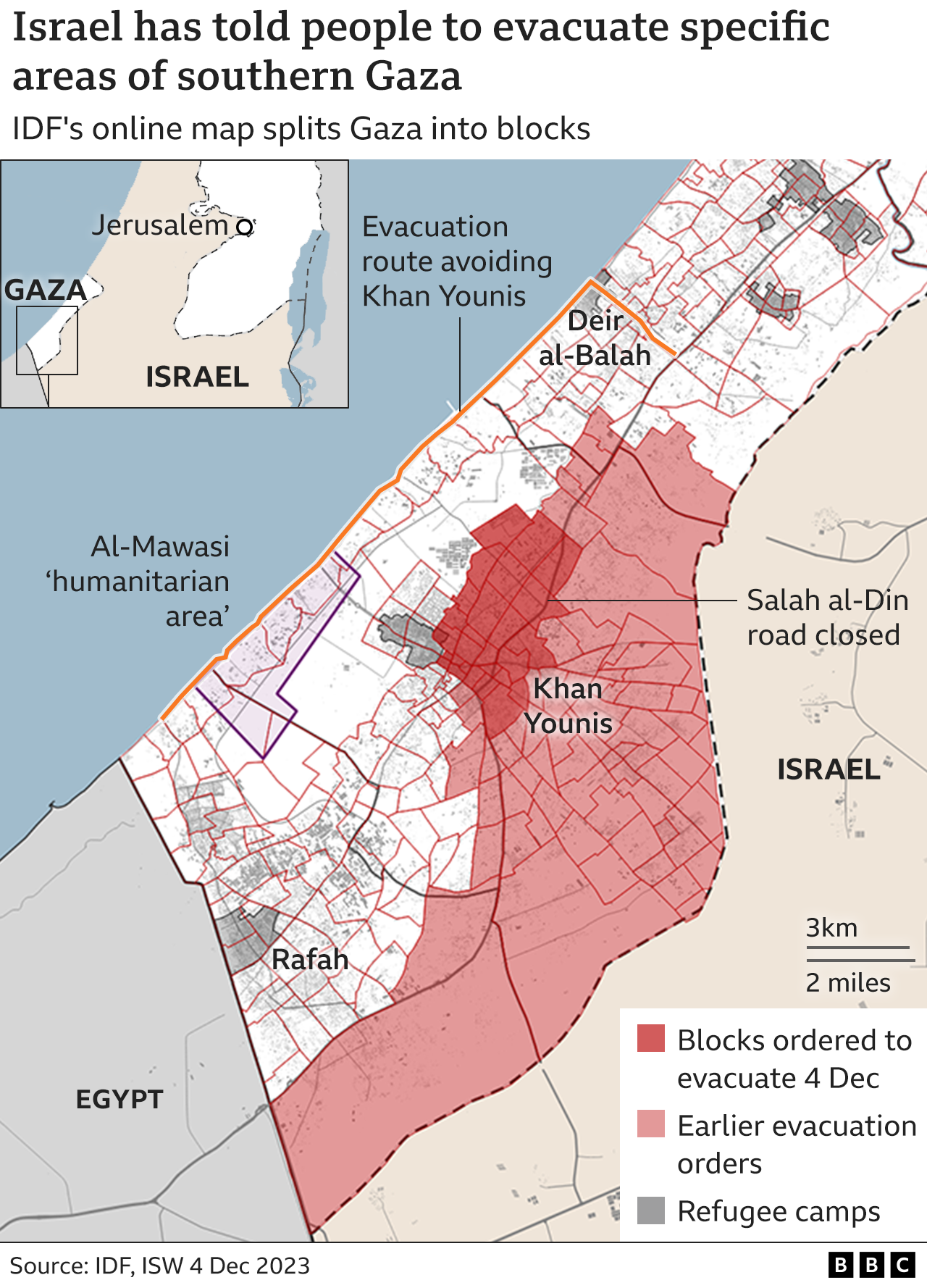
Latest News
Ingebrigtsen and Tsegay deliver while others surprise on final day

Sunday was a day of surprises at the World Athletics Indoor Championships Nanjing 25.
While the likes of Jakob Ingebrigtsen and Gudaf Tsegay lived up to expectation in the 1500m finals, and Sander Skotheim did likewise in the heptathlon, there were several shock wins throughout the final day of action in Nanjing’s Cube.
Claire Bryant set the tone with the first final of the day, taking a surprise victory in the long jump. Another shock soon followed as world and Olympic high jump champion Yaroslava Mahuchikh was beaten by Australian duo Nicola Olyslagers and Eleanor Patterson.
New Zealand shot putter Tom Walsh and sprint hurdler Devynne Charlton both produced their best form of the year so far to take surprise golds. Prudence Sekgodiso, meanwhile, was similarly surprised to win the women’s 800m. The men’s 800m, by contrast, went to the form book as Josh Hoey held on for victory.
Normal order was restored by the end of the day with USA taking dominant wins in both 4x400m finals. It meant they ended the championships top of the medals table with 16 medals, six of them gold.
[World Athletics]
Latest News
Canada’s PM Carney triggers snap election, vote set for April 28

Canada’s new Prime Minister Mark Carney has moved to dissolve Parliament and trigger a snap election on April 28.
The widely anticipated decision on Sunday kicks off an election race less than two weeks after Carney took up his post, succeeding Justin Trudeau at a time of soaring tensions with the United States.
“We are facing the most significant crisis of our lifetimes because of President Donald Trump’s unjustified trade actions and his threats to our sovereignty,” the Liberal Party leader told reporters in Ottawa after he met with the governor general to request parliament’s dissolution.
“I’m asking Canadians for a strong, positive mandate to deal with President Trump and to build a new Canadian economy that works for everyone because I know we need change – big change, positive change.”
The election had to be held by October 20, but experts say Carney is hoping that an early vote will benefit his Liberal Party, which is riding a wave of momentum.
The party, which has been in government since 2015, has seen a surge in support since Trudeau’s January announcement that he planned to step down and amid repeated threats from Trump.
[Aljazeera]
Latest News
Three killed and 15 injured in New Mexico mass shooting

Three people were killed and 15 others injured in a mass shooting between two rival groups at an unsanctioned car show on Friday in the US state of New Mexico, according to local authorities.
The shooting took place at Young Park in the city of Las Cruces, about 22:00 local time.
Four people have been charged with in relation to the three murders, Las Cruces Police Department said on Sunday, including a 15-year-old boy.
Two 19-year-old men and one 16-year-old boy died in the shooting, police said.
In a statement on X, Las Cruces police said those arrested and charged were two 17-year-old boys, a 15-year-old boy and a 20-year-old man.
Police chief Jeremy Story said there had been “an altercation between two groups of people and that altercation escalated to gunfire between both groups”. “Several other people were also injured in the crossfire.”
Mr Story said there had been “ill will” between the two groups prior to the car show.
About 50 to 60 bullet shell casings from handguns were found at the scene, police said, adding that the crime scene was huge and about 200 people had been at the park.
Police have asked any witnesses to come forward with information or video.
Those injured in the shooting ranged from ages 16 to 36. Authorities have not yet named any of the victims.
Seven patients were sent to nearby El Paso, Texas, which is just over the New Mexico border, for further medical treatment, said fire chief Michael Daniels.
Four other victims had been treated and released, Mr Daniels said.
[BBC]
-

 Business3 days ago
Business3 days agoCargoserv Shipping partners Prima Ceylon & onboards Nestlé Lanka for landmark rail logistics initiative
-

 Sports6 days ago
Sports6 days agoSri Lanka to compete against USA, Jamaica in relay finals
-

 Features1 day ago
Features1 day agoThe US, Israel, Palestine, and Mahmoud Khalil
-
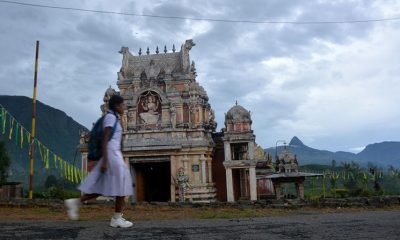
 News1 day ago
News1 day agoScholarships for children of estate workers now open
-

 Business3 days ago
Business3 days agoSri Lankans Vote Dialog as the Telecommunication Brand and Service Brand of the Year
-

 News2 days ago
News2 days agoDefence Ministry of Japan Delegation visits Pathfinder Foundation
-

 News1 day ago
News1 day agoSeniors welcome three percent increase in deposit rates
-

 Features3 days ago
Features3 days agoThe Vaping Veil: Unmasking the dangers of E-Cigarettes


